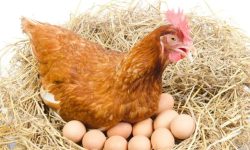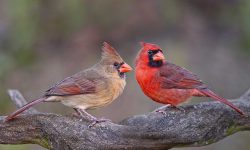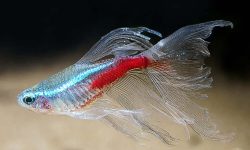The Long-billed Curlew (Numenius americanus) stands as a striking example of evolutionary elegance and ecological specialization. With its impossibly long, down-curved bill and graceful posture, this species is the largest shorebird native to North America. Despite being classified as a shorebird, it primarily breeds far from water, in the expansive grasslands of the western and central United States. Once abundant across the Great Plains, the Long-billed Curlew is now a species of conservation concern due to habitat loss and degradation. This article explores the biology, behavior, and conservation of this remarkable bird.

Identification and Bill Morphology
Visual Markers and Sexual Dimorphism
Adult Long-billed Curlews are striking birds with a warm, sandy-buff coloration that blends seamlessly into grasslands and tidal flats. Their plumage provides camouflage in both dry and coastal habitats, while their cinnamon-toned underwings flash vividly during flight. However, the most defining feature is the dramatically elongated, downward-curved bill, which serves both ecological and functional purposes.
In this species, sexual dimorphism is expressed through bill length: females tend to have noticeably longer bills than males, sometimes reaching 8.6 inches (22 cm). This difference not only facilitates niche partitioning—allowing males and females to target slightly different prey depths—but may also play a role in mate selection or dominance during feeding.
Evolutionary Design: A Foraging Instrument
The curlew’s bill is not simply an exaggerated trait for display. It is a product of evolutionary refinement driven by the need to access deeply buried prey. In open prairies, earthworms and beetle larvae often lie several inches beneath the soil surface. Along coastal mudflats, prey like polychaete worms and burrowing crabs hide in complex, vertical burrows. The curved morphology allows the bird to reach these targets with minimal head movement.
The downturned shape also serves a defensive function: it enables the curlew to maintain a broad visual field while foraging. By keeping its eyes angled above ground while probing, the bird remains alert to potential predators—an essential adaptation in exposed environments like grasslands or intertidal zones.
Internal Anatomy and Sensory Precision
What sets the Long-billed Curlew apart from many other tactile foragers is the neurobiological sophistication of its bill. Near the tip, the bill contains a high density of Herbst corpuscles—pressure-sensitive nerve endings that allow the bird to detect minute vibrations and textures beneath the surface. These specialized receptors make it possible for curlews to locate prey by touch, even when the prey is not visible or audible.
This kind of mechanosensory acuity is rare in the avian world and most comparable to other deep-probing species like kiwis or certain sandpipers. It allows for efficient foraging under low-visibility conditions, such as turbid tidal waters or dark, loamy prairie soils.
Habitat and Breeding Behavior
Prairie Roots: A Counterintuitive Breeding Strategy
Although the Long-billed Curlew is frequently associated with coastal wetlands during the nonbreeding season, its breeding range is centered in the interior grasslands of North America. These inland habitats—stretching from the southern Canadian plains through Montana, Wyoming, Colorado, and into parts of New Mexico and Texas—offer expansive visibility, sparse human disturbance, and ideal vegetation structure for ground-nesting.
The preference for open prairie ecosystems may seem paradoxical for a shorebird, but it reflects a long evolutionary history of inland specialization. The short grasses and interspersed shrubs provide the delicate balance of camouflage and visibility that ground-nesting birds require.
Site Fidelity and Territorial Displays
Long-billed Curlews exhibit strong site fidelity, often returning to the same breeding territory for multiple years. This attachment likely enhances reproductive success, as returning pairs are already familiar with local predator patterns and vegetation structure.
Males establish and defend nesting territories through dramatic aerial displays, during which they fly in wide, looping arcs while delivering repetitive, flute-like calls. These vocalizations serve to both attract females and ward off rival males. Ground displays—such as tail-raising and slow stalking—may also play a role in courtship and territorial reinforcement.
Nesting Strategy and Vegetation Preferences
Nest construction is minimal—a shallow depression in the soil lined with a few grass stems or pebbles. However, the choice of nest location is highly strategic. Pairs tend to select areas with medium-height grasses (typically 20–40 cm tall), which provide enough vertical cover to obscure the nest from aerial predators like hawks, while still offering adults a clear line of sight to detect ground-based threats such as foxes or coyotes.
The success of this nesting strategy depends heavily on land use practices. Light to moderate grazing by cattle, for example, can maintain vegetation at ideal heights. In contrast, heavy grazing, fire suppression, or row-crop agriculture can degrade habitat quality by eliminating cover, introducing invasive plants, or increasing predator access.
Shared Parental Roles and Chick Development
Both male and female curlews participate in incubation, which lasts around 27–30 days, and they continue to share brooding and chick-rearing duties after hatching. The chicks are precocial—born with open eyes, downy feathers, and the ability to walk and forage within hours of hatching. However, they remain dependent on adult protection and guidance, especially during the first two weeks.
Their primary defense against predation is immobility and camouflage. When threatened, chicks instinctively crouch and freeze, blending into the background thanks to their speckled plumage. This anti-predator behavior is effective only if surrounding vegetation provides enough concealment—again highlighting the importance of habitat structure for breeding success.
Migration and Wintering Grounds
A Long-Distance but Targeted Traveler
The Long-billed Curlew is a true long-distance migrant, departing from its breeding grounds in the interior grasslands of western North America and heading south and west toward milder wintering sites. These include California’s Central Valley, the Pacific Coast of Mexico, the Gulf Coast from Texas to Florida, and occasionally parts of Central America. While the distance covered may vary, the timing and direction of migration are remarkably consistent across populations.
Unlike many migratory birds that follow broad flyways, curlews exhibit narrow migratory fidelity, with many individuals returning not only to the same breeding territories but also to specific wintering locations year after year.
Migration as a Multi-Stage Strategy
Migration in Long-billed Curlews is not a single, uninterrupted journey. Rather, it unfolds in stages, with birds pausing at key stopover sites to rest and refuel. These staging areas—often located in wet meadows, agricultural fields, or mudflats—are essential for energy replenishment, particularly for a species whose diet relies on invertebrates that vary seasonally in abundance.
The success of this migratory strategy depends on timing and resource availability. Birds must arrive at stopovers when food is plentiful and leave in time to reach the next site before resources decline. Weather events, habitat degradation, or delayed fat accumulation can disrupt this rhythm, reducing survival and reproductive success in the following year.
Geographic Landmarks and Navigation
Curlews appear to navigate using a combination of geomagnetic cues, solar orientation, and landmark-based memory. Migratory routes often follow consistent natural features such as river valleys, escarpments, and desert basins, which serve both as visual guides and ecological corridors.
Recent satellite telemetry studies have revealed strong migratory connectivity—that is, birds from specific breeding populations tend to winter in specific regions. For instance, curlews breeding in Montana may consistently winter in northern Mexico, while those from the southern Great Plains may head for Texas or coastal Louisiana. This has critical implications for conservation: habitat loss at one end of the migratory range can affect specific breeding populations, not just the species as a whole.
Stopover Ecology and Conservation Challenges
During migration, curlews are highly dependent on stopover sites rich in invertebrate prey, especially in arid and semi-arid landscapes. These ephemeral feeding grounds are vulnerable to agricultural conversion, urban development, and climate-driven drought, making curlews one of many shorebirds threatened by habitat fragmentation across their flyway.
Because these birds often revisit the same stopovers year after year, the loss of even a single staging site can create a bottleneck in their migratory path. Conservation efforts must therefore include not just breeding and wintering habitats, but also the matrix of refueling sites in between.
The Role of Memory and Site Fidelity
Long-billed Curlews exhibit remarkable spatial memory, returning with high precision to both breeding and wintering sites. This fidelity suggests early-life environmental imprinting, where fledglings memorize landscape cues and migratory pathways during their first journeys. As adults, they rely on this information for navigation—behavior that enhances survival but makes them vulnerable to rapid habitat change.
Understanding this behavioral rigidity is key to designing effective conservation strategies. Protecting not just general habitat types but specific locations used by identifiable subpopulations may be essential to maintaining migratory continuity and long-term species viability.
Diet and Foraging Strategies
Seasonal Dietary Shifts: From Grasslands to Coastal Mud
Long-billed Curlews exhibit marked seasonal dietary flexibility, reflecting their movements between inland grasslands during the breeding season and coastal environments during winter. In their breeding habitats, curlews primarily target terrestrial invertebrates such as grasshoppers, beetles, caterpillars, and earthworms. These prey items are abundant in shortgrass and mixed-grass prairies, especially following rainfall or grazing events that expose the soil surface.
During the nonbreeding season, curlews shift to coastal mudflats, estuaries, and saltmarshes, where they feed on marine benthic invertebrates including polychaete worms, fiddler crabs, small clams, and shrimp. This seasonal diet switch is not just opportunistic—it is a survival strategy that allows curlews to exploit different ecological niches throughout the year.
Methodical Foraging: A Slow and Deliberate Approach
Unlike many shorebirds that employ rapid pecking or active chasing, the Long-billed Curlew uses a slow, measured probing technique. While foraging on grassland soils, it walks with deliberate steps, inserting its bill deep into the substrate in search of hidden prey. On coastal mudflats, its approach remains similarly unhurried, allowing for precise extraction of soft-bodied organisms.
This deliberate style is functionally tied to its bill morphology. The long, curved bill is not designed for stabbing or snapping but for gentle insertion and subtle manipulation, allowing the curlew to avoid damaging delicate prey such as worms or crustaceans. In soft sediment, it can even “feel” for prey through tactile cues—much like using forceps underwater.
Multimodal Sensory Integration
Foraging efficiency in curlews depends on a blend of visual and tactile strategies. When prey is visible—such as grasshoppers on vegetation or crabs on the surface—curlews use visual targeting. But when prey is hidden beneath soil or mud, they switch to mechanosensory detection, guided by the rich array of nerve endings near the tip of the bill.
Studies using experimental substrates have demonstrated that curlews can detect vibrations and subtle movement underground, indicating an ability to process subsurface cues in the absence of visual input. This places the Long-billed Curlew among a select group of birds capable of foraging “blindly” with high success rates—comparable to kiwis and certain sandpipers.
Habitat-Specific Adjustments
In grasslands, curlews focus their foraging during morning and late afternoon, when soil moisture is higher and surface activity of invertebrates peaks. In contrast, on wintering grounds, their foraging is often tide-dependent. Birds concentrate efforts during low tide, when mudflats are exposed and prey becomes accessible in intertidal zones. Some individuals may follow tidal cycles so precisely that they switch foraging locations throughout the day as water levels shift.
These behavioral adaptations are essential to maintaining energy balance across widely different habitats, seasons, and prey communities. In years when insect outbreaks occur, curlews may even exhibit dietary specialization, feeding heavily on a single prey type like Mormon crickets or locusts.
Conservation Status and Recovery Efforts
A Species of High Concern, Not Yet Endangered
Although the Long-billed Curlew is not currently listed as federally endangered in the United States or Canada, it is designated as a species of high conservation concern by organizations such as Partners in Flight and the U.S. Fish and Wildlife Service. This status reflects persistent long-term population declines, particularly in the eastern portions of its historic breeding range, where native grasslands have been heavily fragmented or entirely lost.
The concern is amplified by the bird’s ecological specialization. Long-billed Curlews rely on large expanses of open prairie with low vegetation—an ecosystem that has been reduced to a fraction of its original extent across North America. As a result, even modest habitat changes can produce disproportionate impacts on breeding success and population viability.
Habitat Loss on Both Ends of the Migration
Curlew conservation faces a dual challenge: protecting breeding habitat in inland prairies and wintering habitat in coastal zones. On the breeding grounds, intensive agriculture, urban sprawl, and energy development have dramatically altered the landscape. Croplands often lack the vegetative structure needed for nesting, and earlier mowing cycles can destroy eggs or chicks before they fledge.
On the wintering side, critical estuaries, tidal flats, and inland wetlands face pressures from shoreline development, pollution, aquifer depletion, and sea level rise. These impacts not only reduce prey availability but also limit safe foraging areas during key migratory periods. Because curlews exhibit high site fidelity, the loss of even a single wintering or stopover site can result in lower survival and reproduction rates across entire migratory populations.
The Curlew as a Grassland Bioindicator
Ecologists increasingly view the Long-billed Curlew as a bioindicator species—a bird whose presence and breeding success reflect the overall health of prairie ecosystems. As top insectivores and ground-nesters, curlews require intact habitat structure, prey abundance, and minimal disturbance. When curlew numbers decline, it often signals broader ecological degradation, such as loss of native plant diversity, increased predator access, or inappropriate grazing regimes.
This indicator role makes curlews central to land management plans, especially in regions implementing prairie restoration or rotational grazing strategies. In some cases, wildlife biologists track nest success and chick survival as a benchmark for evaluating rangeland stewardship practices.
Policy and Programmatic Responses
In recent years, targeted conservation programs have emerged to address habitat needs. The North American Grasslands Conservation Act, modeled in part after the successful Wetlands Reserve Program, prioritizes the protection and restoration of native grasslands used by curlews and other migratory birds. This initiative focuses not only on public lands but also on private property, which makes up the majority of potential curlew habitat.
State-level programs and nonprofit partnerships now offer financial incentives to ranchers and farmers who adopt curlew-friendly practices. These include delaying haying or mowing until after nesting season, implementing rotational grazing that maintains suitable grass height, and preserving isolated wetland pockets that provide important foraging areas.
Science-Driven Conservation: The Role of GPS Telemetry
Modern conservation planning relies heavily on telemetry and geospatial science. Researchers are equipping curlews with lightweight GPS tags that transmit real-time data on migration routes, stopover locations, and habitat use patterns. These data have been instrumental in identifying previously unknown wintering hotspots, understanding migratory connectivity, and assessing how land use changes influence curlew movements.
By integrating this information into predictive models, conservationists can prioritize land parcels for acquisition, restoration, or stewardship agreements—ensuring that limited funding has the greatest ecological return.
Why the Curlew Matters: Ecological and Cultural Roles
Keystone in the Grassland Web
The Long-billed Curlew occupies a pivotal position in grassland and coastal food webs. As a mid-trophic-level consumer, it regulates populations of soil-dwelling and surface invertebrates—such as beetles, crickets, caterpillars, and small crustaceans—many of which are agricultural pests. In doing so, curlews help maintain ecological balance in both natural and modified landscapes.
Their role does not stop at consumption. By serving as prey for larger animals such as hawks, foxes, coyotes, and owls, curlews facilitate energy transfer upward in the food chain. The absence or decline of curlews could disrupt these energy flows, resulting in unpredictable cascading effects across the ecosystem. In this way, their presence acts as an indicator of ecosystem resilience—a signal that complex food webs are still intact and functioning.
A Living Barometer of Prairie Health
Because of their sensitivity to habitat degradation and disturbance, Long-billed Curlews are considered valuable bioindicators. Their successful breeding requires precise vegetation structure, ample prey density, and low levels of human interference. When curlew populations decline, it often reflects broader ecological stressors—such as overgrazing, habitat fragmentation, or pesticide use.
For conservation planners and ecologists, monitoring curlews is therefore more than tracking a single species—it’s an effective tool for evaluating landscape-level health. A thriving curlew population often corresponds with high biodiversity, good soil health, and sustainable land-use practices.
Cultural and Symbolic Significance
The Long-billed Curlew’s haunting call—often transcribed as “curlee-curlee”—has long been associated with the spirit of open spaces. For many indigenous cultures across the Great Plains and southwestern deserts, the bird holds symbolic meaning tied to water, fertility, and seasonal change. In oral traditions, curlews may appear as messengers or signs of ecological transitions, reflecting their natural rhythm of migration and return.
For ornithologists and birdwatchers, the curlew has become a symbol of prairie conservation—a flagship species that inspires both scientific inquiry and grassroots stewardship. Its distinct silhouette, graceful flight, and extraordinary bill morphology have earned it a revered place in field guides, birding literature, and conservation campaigns.
A Case Study in Adaptation and Interdependence
From an evolutionary standpoint, the Long-billed Curlew offers a compelling example of adaptive specialization. Its long, decurved bill, tactile foraging strategies, and habitat fidelity illustrate how natural selection shapes morphology in response to ecological constraints. Its complex migratory system—spanning thousands of kilometers and linking inland breeding areas with distant coastal wetlands—demonstrates how bird life is intricately woven into the fabric of multiple biomes.
Studying the curlew thus deepens our understanding of connectivity between species and landscapes. It reminds us that conservation cannot be isolated to a single patch of land or single time of year. Protecting this species requires coordinated action across political borders, seasons, and ecological systems.
Conclusion
The Long-billed Curlew is more than a bird with a curious beak—it is a symbol of North America’s disappearing grasslands and the resilience of migratory species. Its elegance lies not just in its form, but in its ecological role and the evolutionary journey that shaped it. Protecting this bird means preserving the integrity of two vastly different habitats—prairies and coastal wetlands—across thousands of miles. In doing so, we help safeguard a broader spectrum of biodiversity and natural heritage.






